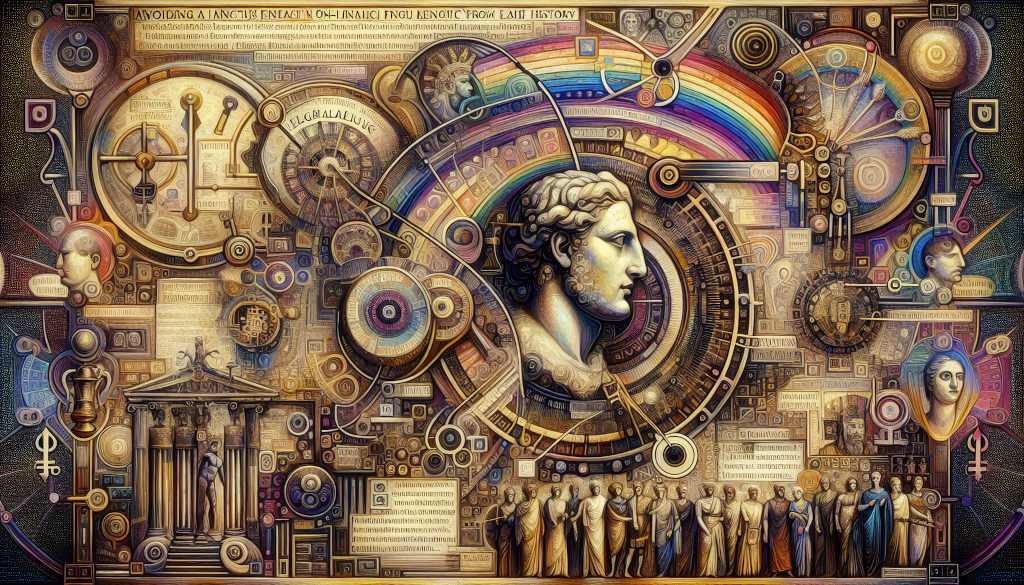
Re-evaluating the Roman Emperor Elagabalus: A Transgender Icon Forgotten By History
The enigmatic figure of Elagabalus, a Roman emperor who reigned from 218 to 222 CE, has long fascinated historians, social scientists, and the general public alike. Scholars, who examine the emperor’s life through a variety of different lenses, have continually grappled with the far-reaching implications of Elagabalus’s gender identity. An increasing amount of academic literature, particularly within the realms of LGBTQ+ studies, gender studies, and classical studies, is now pointing to the likelihood that Elagabalus was, in fact, transgender. However, in a society that seems increasingly polarized between progressive acceptance and regressive denial, the acknowledgement of Elagabalus’s transgender identity is often clouded by ideological agendas.
At the tender age of 14, Elagabalus ascended to the Roman throne, ruling during a period of immense political upheaval. Throughout her short-lived rule, Elagabalus was noted for her unusual behaviour, eccentricities, and panache for the flamboyant. The most ancient sources describe her as a youthful, effeminate figure with a penchant for self-ornamentation. Augustan History, one of the principal sources of her reign, refers to Elagabalus using both male and female pronouns, providing a crucial hint at her possible transgender identity.
Historical narratives, biased as they may be by the norms of their time, have often brushed aside Elagabalus’s untraditional gender expression, casually dismissing it as mere eccentricity or decadence. This perspective is symptomatic of the ideological refusal to acknowledge non-binary and transgender identities within historical contexts. However, the trend is being passionately challenged by trans historians like Susan Stryker and Genny Beemyn, who argue that the erasure of trans histories represents a failure to acknowledge the rich historical tapestry of transgender identities.
According to Eric Varner, in his landmark book, “Transcending Gender: Assimilation, Identity, and Roman Imperial Portraits“, Elagabalus often referred to herself as a woman and married a male charioteer, Hierocles. Cassarani argues that Elagabalus’s self-identification as a woman is mirrored by many modern transgender narratives, lending credibility to the view that the emperor was transgender.
Marjorie Lightman and Benjamin Lightman, authors of the seminal work, “A to Z of Ancient Rome: Biographical Dictionary,” maintain that Elagabalus’s rejection of her birth-assigned gender is indicative of her transgender identity. They contend that her adoption of the deity Elagabalus, typically portrayed as androgynous or multi-gendered, was indicative of her personal identification with non-binary gender constructs.
The assertion that Elagabalus was a transgender woman is not just rooted in academic curiosity nor is it employed as a retroactive label. It is an assertion that questions unexplored narratives thriving in the margins of our past and challenges the heteronormative readings of history.
Those who deny the emperor’s transgender status often dismissed these historical narratives, dismissing the idea as a politically motivated anachronism. However, critics often seem to be operating under a traditionalist, binary view of gender which fails to appreciate the fluidity and diversity of gender identities. The refusal to acknowledge Elagabalus as a transgender figure can robustly be categorized as stemming from an anachronistic rejection of larger LGBTQ+ histories in favour of a sanitized, heteronormative view of history.
Throughout recent history, public discourse regarding the recognition and rights of transgender individuals has remained highly charged. This discourse impacts the way we view and interpret history, as history is a mirror of our collective memory, biased by contemporary perspectives. If we continue to deny queer identities in the historical narrative, we risk perpetuating discriminatory ideologies that hamper societal progress.
Therefore, it is essential to recognize and honour Elagabalus not just as a historical figure, but also as a symbol of transgender history. Doing so not only promotes a more inclusive understanding of history but also paves the way for continued dialogue about gender diversity and fluidity.
In conclusion, a historical analysis of the enigmatic Roman emperor Elagabalus brings into focus the delicate interplay between academic literature, historical interpretation, and ideological bias. As we delve into the annals of history, it is time to set aside our biases and embrace a broader and more inclusive understanding of gender identities, acknowledging the vibrant and diverse lives lived off-script all those centuries ago.